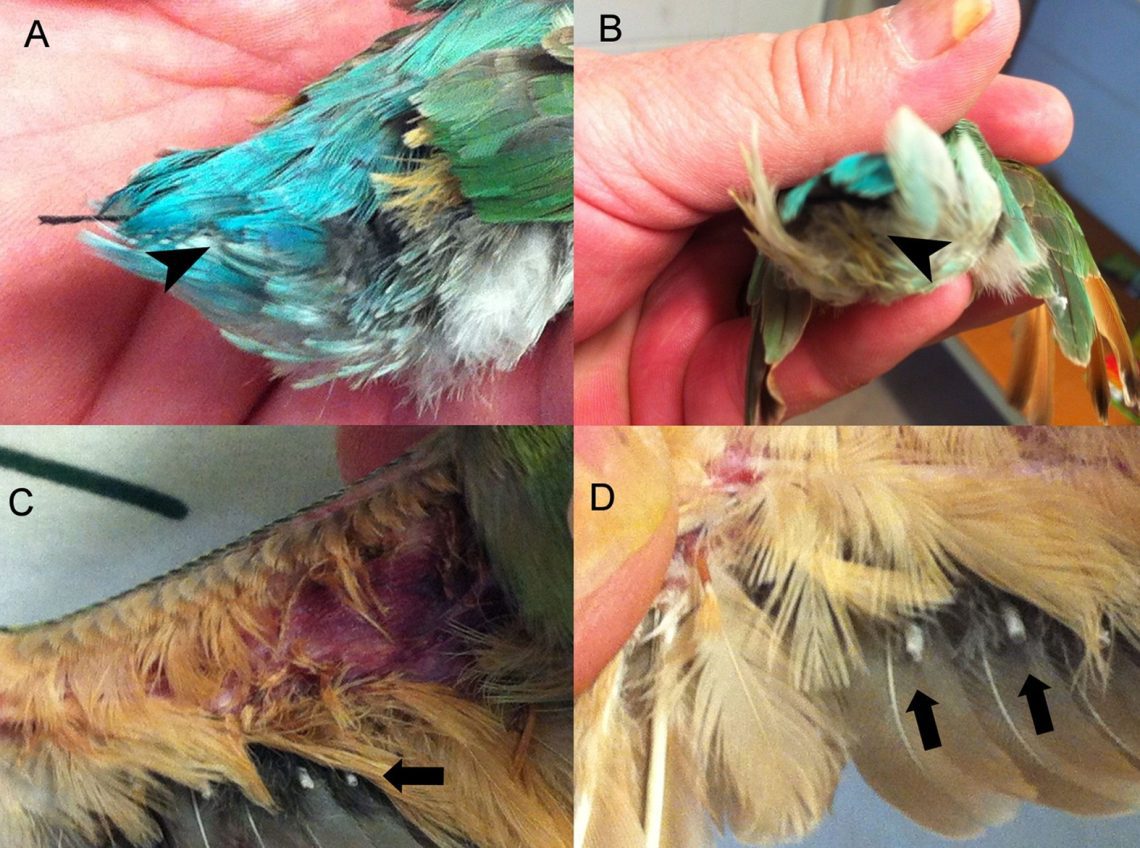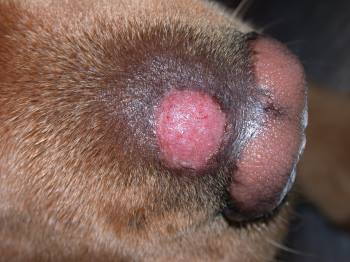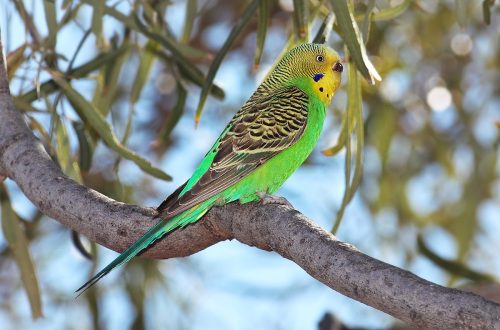
Circovirus infection of birds
Birds suffer from infectious diseases no less than cats or dogs. Therefore, the owner must be familiar with the main diseases and their symptoms in order not to waste time and promptly consult a doctor.
Circovirus infection – PBFD (Psittacine beak and feather disease) or parrot circovirus PsCV-1 – a disease caused by a virus of the Circoviridae family that depresses the immune system of birds, externally destroys the beak, claws and plumage. The disease is more difficult for chicks and young parrots.
Ways of infection
The source of infection is the feces of birds and other fluids they secrete. In the environment, the virus is quite stable, persists for 6 months, and in this regard, other birds can also become infected through care items, cage, food, water.
Symptoms
The symptoms are various and mostly non-specific, that is, it is sometimes not immediately possible to suspect a circovirus. Despite this, the owner must pay attention to the health of his parrot. Warning markers include:
- Oppression and lethargy
- Decreased appetite
- Vomiting and diarrhea
- Goiter inflammation
- Deformation of claws and beak
- Discoloration and overgrowth of beak tissue
- disheveled
- Irregular plumage growth, short, curly feathers
- Feathers become excessively dry and brittle
- Possible complete loss of plumage
- The skin becomes thinner, inflamed, becomes available for infections
- Inflammation can affect the oral cavity
It differs from self-plucking – the parrot does not pluck its own feathers and injures itself – this plumage develops incorrectly and falls out. The easiest way to distinguish PBFD from self-plucking is if there are no feathers and in areas of the bird’s body that are inaccessible to the beak, such as the head.
Forms of the disease
The incubation period of the disease, that is, the time from the moment the pathogen enters the bird’s body until the first clinical symptoms appear, can range from several weeks to several years. It depends on many factors: the conditions in which the bird lives, age, existing diseases, immunity. There are two forms of the disease: acute and chronic.
- In the acute form, the disease proceeds quickly, internal lesions are significant and the bird dies in a short time. There is a lack of appetite, weight loss, vomiting and diarrhea, loss or deformation of plumage – primarily fluff, large feathers are brittle and fall out easily, lethargy and depression.
- In the chronic form, the process is sluggish, lasting for months and years, at some point the owner can outwardly see damage: abnormal growth of plumage, deformation of claws and beak. With this form, parrots can also die, but more often from a secondary infection, which is superimposed on the underlying disease against the background of a decrease in immunity.
Diagnostics
Diagnosis can be quite difficult. Circovirus masquerades as other diseases with its symptoms, and often the owners begin to treat the bird for parasites, or think about the lack of vitamins in the diet, and miss the time. With signs of any disease in birds, it is better to contact an ornithologist, who will carefully collect anamnesis into information about the life and illness of a parrot, and carefully conduct an examination.
- A biochemical blood test may be required.
- Confirm circovirus by PCR. This method accurately allows you to calculate the presence of an infectious agent. Litter is taken for analysis or swabs are taken from the goiter, a skin or feather biopsy is taken.
- The doctor may also take scrapings for microscopy to rule out parasites and swabs for other bacterial and viral diseases.
If the bird died, and other birds live in your house, then it is worth conducting a pathological autopsy, this will also help in making a diagnosis and help save other inhabitants.
Forecast, treatment and prevention
The prognosis for the detection of circovirus is cautious, since there is currently no specific treatment and effective vaccines. Depending on the course, the parrot may die within a few days or a couple of years, but cases of external recovery have also been described. However, the isolation of the virus may continue, so it is necessary to isolate the patient. Necessary:
- Create quality living conditions for the bird, provide fresh food and water, vitamins and minerals.
- Keep under control the development of secondary infection.
- Isolate the sick individual from healthy ones.
- Perform sanitary and hygienic treatment of the cell.
When buying a new bird, it is necessary to take a PCR to exclude carriage, but it can be completely excluded when conducting two studies with an interval of three months. Also, do not forget about quarantine. This will protect the livestock not only from the circovirus, but also from other diseases. It is better not to skip preventive procedures in the form of deworming and treatment from external parasites, since the immunity of the bird depends, among other things, on them.





